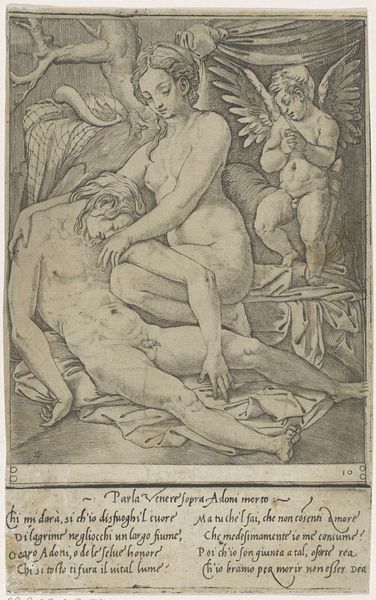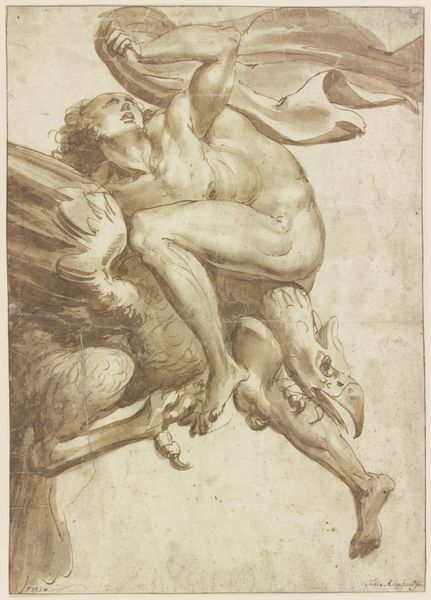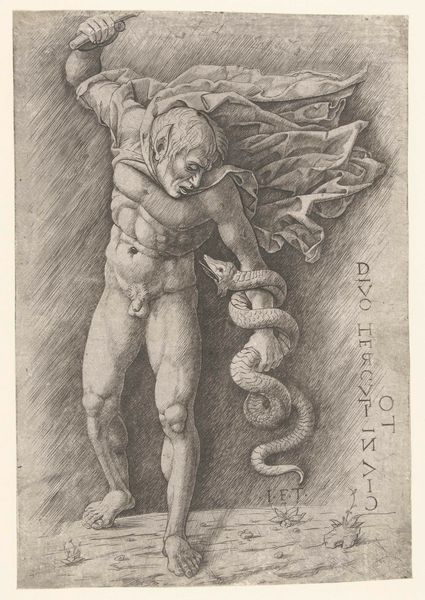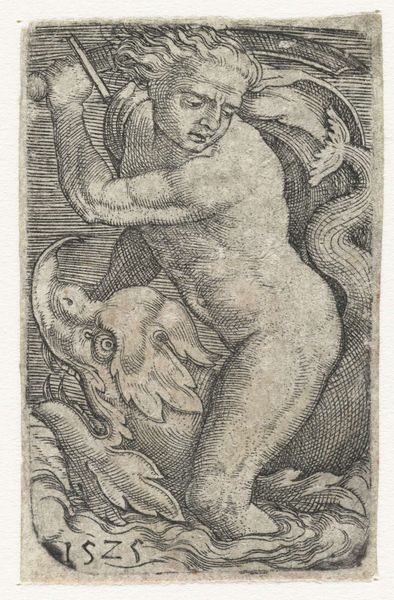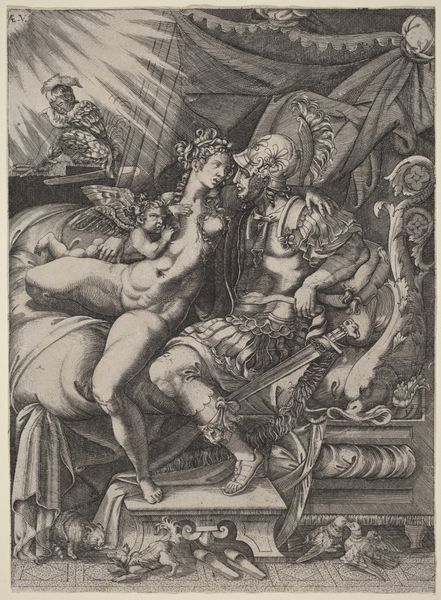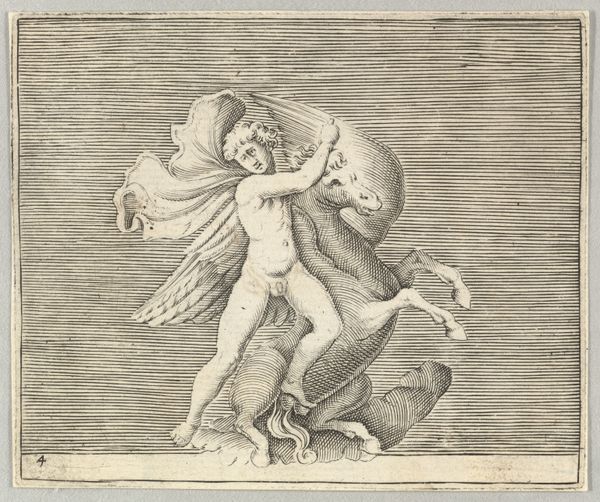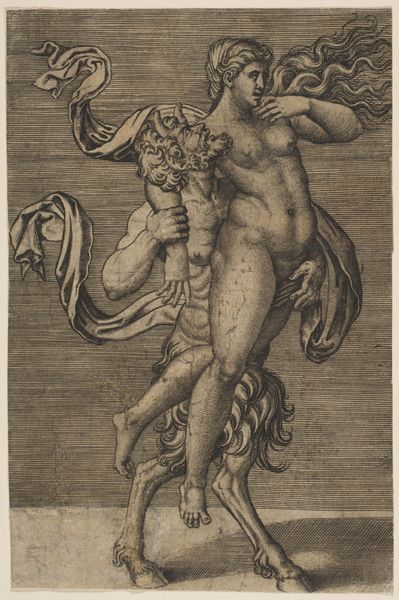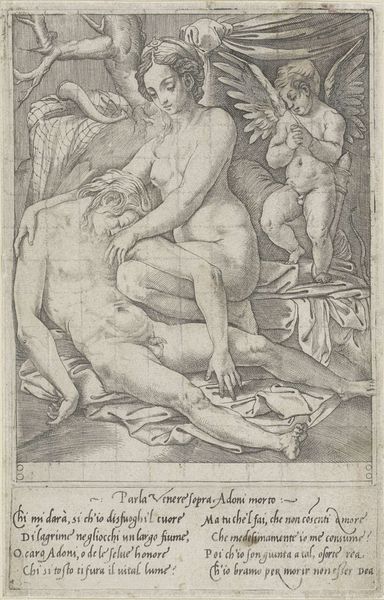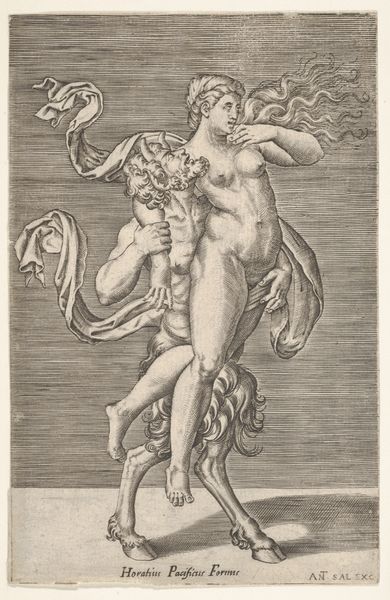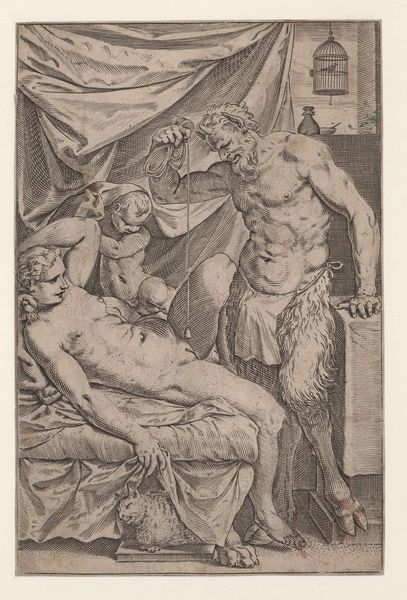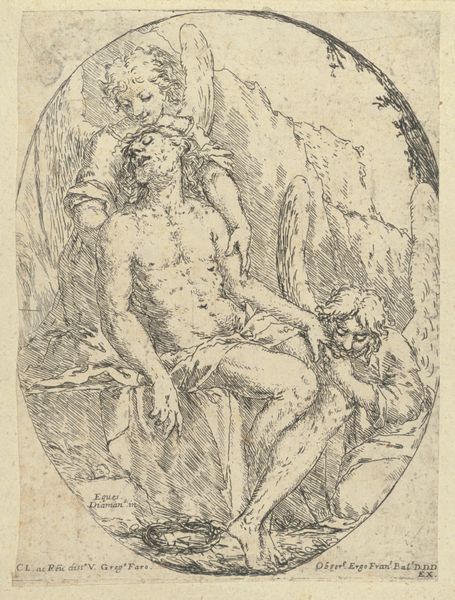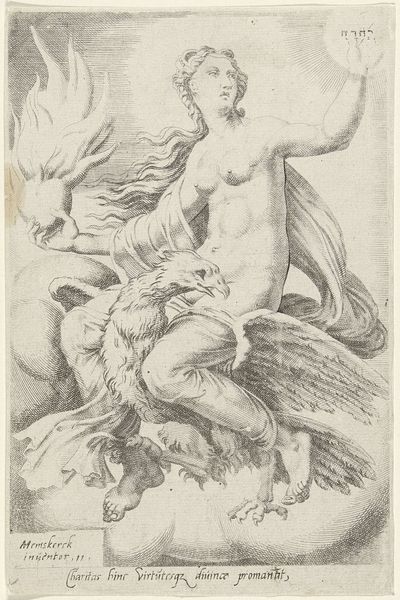
drawing, engraving
#
drawing
#
pencil sketch
#
figuration
#
11_renaissance
#
pencil drawing
#
line
#
history-painting
#
nude
#
engraving
Dimensions: height 282 mm, width 253 mm
Copyright: Rijks Museum: Open Domain
Giovanni Antonio da Brescia made this print, Hercules Fighting the Nemean Lion, in the early 16th century. It’s made from ink on paper, an everyday material. The process of creating it involved engraving an image into a metal plate, inking it, and then pressing it onto paper, transferring the design. Look at the texture. The lines define the forms, giving a sense of depth and musculature to Hercules, and a wildness to the lion’s mane. The engraving process requires a deep understanding of light and shadow to create the illusion of three dimensions on a flat surface. Prints like this were relatively affordable. They made art accessible to a wider audience. Brescia's print speaks to the rise of a more democratized art market, driven by the mechanics of reproduction and distribution. The work involved in making a print like this is considerable. But, this painstaking effort is critical to understanding its full significance. It challenges the traditional hierarchy between the unique artwork and the mass-produced object.
Comments
rijksmuseum about 2 years ago
⋮
Slaying the Nemean lion was the first of the Twelve Labours of Hercules. It was a favourite subject among artists, representing the victory of human virtue over bestial lust. The engraver used a now-lost drawing by Mantegna for this print. He rendered light and shade with parallel lines, creating the illusion of a depiction of an ancient marble sculpture.
Join the conversation
Join millions of artists and users on Artera today and experience the ultimate creative platform.
